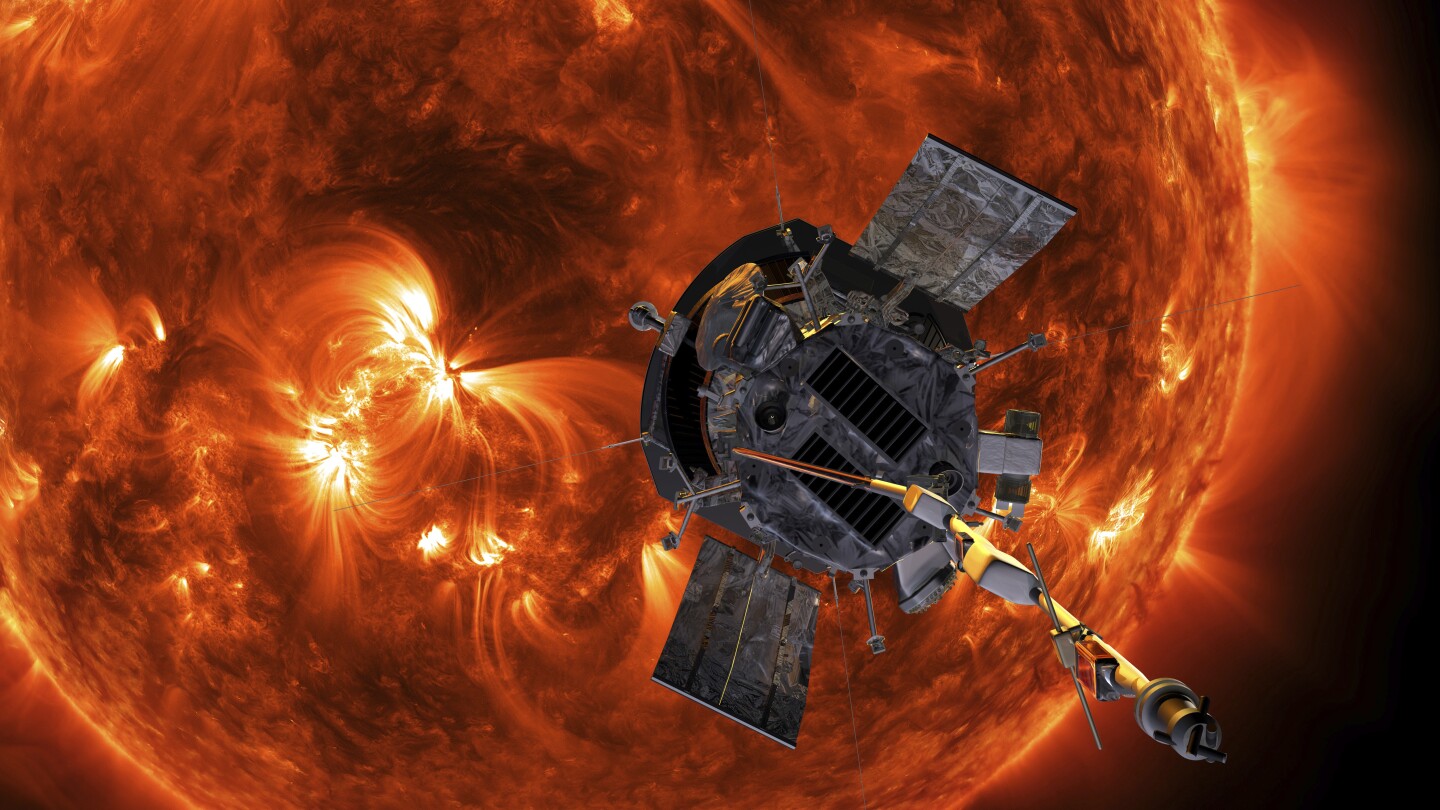Science
NASA’s Parker Solar Probe survives close brush with the sun’s scorching surface

NASA’s Parker Solar Probe Makes Historic Closest Approach to the Sun
NASA’s Parker Solar Probe has achieved a groundbreaking milestone by successfully making the closest-ever approach to the Sun. On Friday, the space agency confirmed that the spacecraft had come within a record-breaking 3.8 million miles (6 million kilometers) of the Sun’s surface earlier in the week. This remarkable feat marks a major step forward in humanity’s exploration of our solar system and our understanding of the Sun’s behavior. The spacecraft sent back an “all-clear” message on Thursday night, confirming that it had survived the perilous journey and was operational.
The Parker Solar Probe was launched in 2018 with the primary mission of studying the Sun up close. Since its deployment, the spacecraft has been hurtling through space, navigating the Sun’s outer atmosphere, known as the corona. This region is of particular interest to scientists because it holds the key to understanding several unanswered questions about the Sun’s dynamics. The probe is now expected to maintain this close proximity to the Sun until at least September, providing scientists with a wealth of data about the Sun’s behavior.
One of the most impressive aspects of the Parker Solar Probe is its staggering speed. At its closest approach, the spacecraft reached an incredible 430,000 miles per hour (690,000 kilometers per hour), making it the fastest man-made object ever created. To put this into perspective, this speed is significantly faster than the approximate 67,000 miles per hour (108,000 kilometers per hour) at which the Earth orbits the Sun. Such a high velocity is necessary to allow the spacecraft to orbit the Sun at such a close distance and to gather the most accurate data possible.
The spacecraft is equipped with a state-of-the-art heat shield designed to withstand the extreme temperatures encountered during its close approach to the Sun. The shield can endure temperatures as high as 2,500 degrees Fahrenheit (1,370 degrees Celsius), which is hotter than the melting point of steel. This advanced technology is crucial for protecting the probe’s sensitive instruments from the intense heat radiating from the Sun. The heat shield is a testament to human ingenuity and the remarkable engineering that has gone into this mission.
The primary goals of the Parker Solar Probe are to study the Sun’s corona and to understand the mechanisms that drive the solar wind, a supersonic stream of charged particles that emanates from the Sun. Scientists have long been puzzled by the fact that the corona is hundreds of times hotter than the Sun’s surface, and they hope that the data collected by the probe will provide some answers. Additionally, the probe is designed to investigate the solar wind, which plays a critical role in shaping the environment of our solar system and can have significant impacts on Earth’s magnetic field and the auroras we see in the polar regions.
As the Parker Solar Probe continues its mission, it is expected to provide a treasure trove of new information about the Sun and its behavior. This mission represents a significant step forward in space exploration and underscores humanity’s ongoing curiosity about the universe. The data collected by the probe will not only help us better understand the Sun but also contribute to the development of new technologies and strategies for future space missions. The success of the Parker Solar Probe is a testament to the incredible advancements that have been made in space exploration and the boundless potential of human innovation.
In summary, the Parker Solar Probe’s closest approach to the Sun is a historic achievement that has opened new doors to understanding our solar system. The spacecraft’s remarkable speed, advanced heat shield, and cutting-edge instruments make it an unparalleled tool for studying the Sun. As the probe continues to collect data, scientists around the world eagerly await the insights it will provide about the Sun’s corona and the solar wind. This mission is not just a scientific triumph but also a reminder of the incredible potential for discovery that lies at the heart of space exploration.











